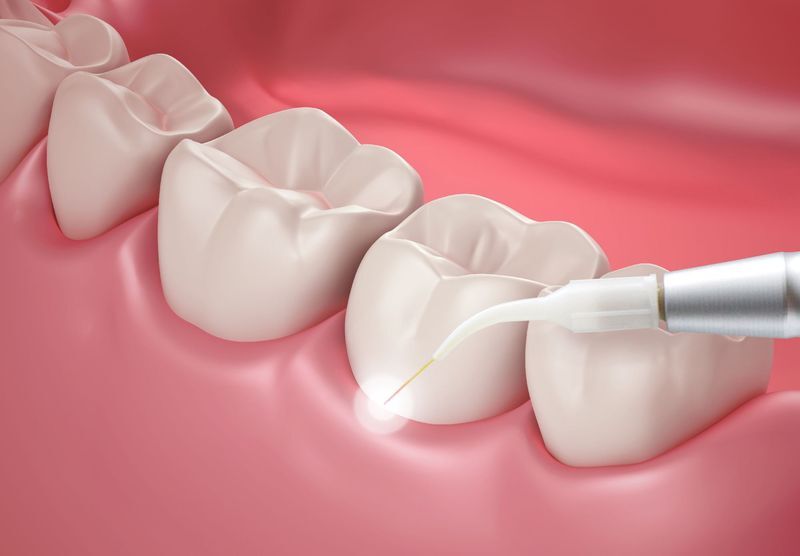Dental extraction
- Home
- Dental Extraction

Gum surgery is a dental procedure performed to treat gum or periodontal disease, which occurs due to bacterial infection that affects the gum tissue, causing inflammation, swelling, redness, and loss of the bones surrounding the teeth. Periodontal disease begins to develop when bacteria in the mouth are already attached to the teeth and gums. A biofilm called dental plaque forms as the bacteria grow and multiply. Dental plaque can be removed by the usual oral hygiene practices such as brushing the teeth and flossing and by undergoing periodic scaling and root planning procedure. If the dental plaque is not removed and is left to remain on the teeth surface for a long time, the gingival tissues are likely to become inflamed until gum disease develops.
What Is Gum Grafting?
Gum grafting is a dependable solution in improving your oral health. This procedure is known to be highly effective, safe and has an easy healing process. If periodontal disease goes untreated, it could create greater concerns for your mouth. Some of those issues can be
Receding gums
Not only are thinning gums not appealing, but gaps can form between the tissue and the tooth allowing bacteria to build up.
Sensitivity
If you are noticing that your teeth are becoming sensitive to temperature, that could be due to your tooth root being exposed. An exposed root can cause immeasurable pain and lasting damage if it is ignored.
Irritated Gums
Gums that are blotchy, bleeding or swollen is a likely sign you have periodontal disease. This can be due to excessive bacteria formed underneath the gums.
Gum recession and pain can happen for a multitude of different reasons. Most commonly we see patients with damaged gums that brush their teeth aggressively, have untreated periodontal diseases or insufficient dental care.
Periodontists recommend gum grafting for those who are experiencing those painful, irritable symptoms. Gum grafting is the treatment of covering exposed roots or thickening existing gum tissue. At Elkhart Periodontics, we provide various types of gum grafting. Those methods include
Free gingival graft
This procedure is done by taking a small amount of tissue from the roof of your mouth. Free gingival grafts are commonly done for a patient who needs thickening for receding gums.
Connective-tissue graft
This grafting is done by going under the surface of the roof of your mouth to be used for missing soft tissue around a tooth or teeth.
Patients can expect to be fully healed from a gum graft procedure in one to two weeks. At Elkhart Periodontics, we provide utmost care from the beginning of the procedure to post-op. Our periodontists are ready to give you a smile that is healthy and bright.
Gum Surgery Types
While scaling and root planing and other types of gum therapy can help treat mild to moderate cases of gum disease, advanced periodontal disease may only be effectively treated with gum surgery. Periodontal surgery can help your dentist restore oral health and aesthetics to your gums. There are many types of gum surgery procedures being practiced, but your dentist will help you choose which treatment is right for you based on the condition of your smile and your desired outcomes. Treating advanced gum disease can help you improve your overall health, as gum disease has been linked to serious systemic diseases such as heart disease and diabetes. With the help of advanced technology, gentle techniques, and comfortable sedation, you can undergo surgery in less time and with less pain than ever before.
1.Chao Pinhole Surgical Technique
For patients with gum recession, many doctors have begun to offer the Chao Pinhole Surgical Technique. This is a less invasive alternative to a traditional gum graft and allows your dentist to lift your gum tissue through a pinhole in your gums. The Chao Pinhole Surgical Technique does not require incisions or stitches, which can expedite your recovery time and minimize your level of discomfort.
2.Cosmetic Gum Contouring
Gum contouring, also known as a gum lift, is a surgical cosmetic procedure for patients who are unhappy with the size and proportion of their gums. Your dentist can conservatively reshape your gums with a laser or a conventional scalpel to help your teeth appear more prominent and restore balance to your smile. Many patients choose gum contouring as part of their cosmetic dentistry treatment to achieve the most comprehensive results.

